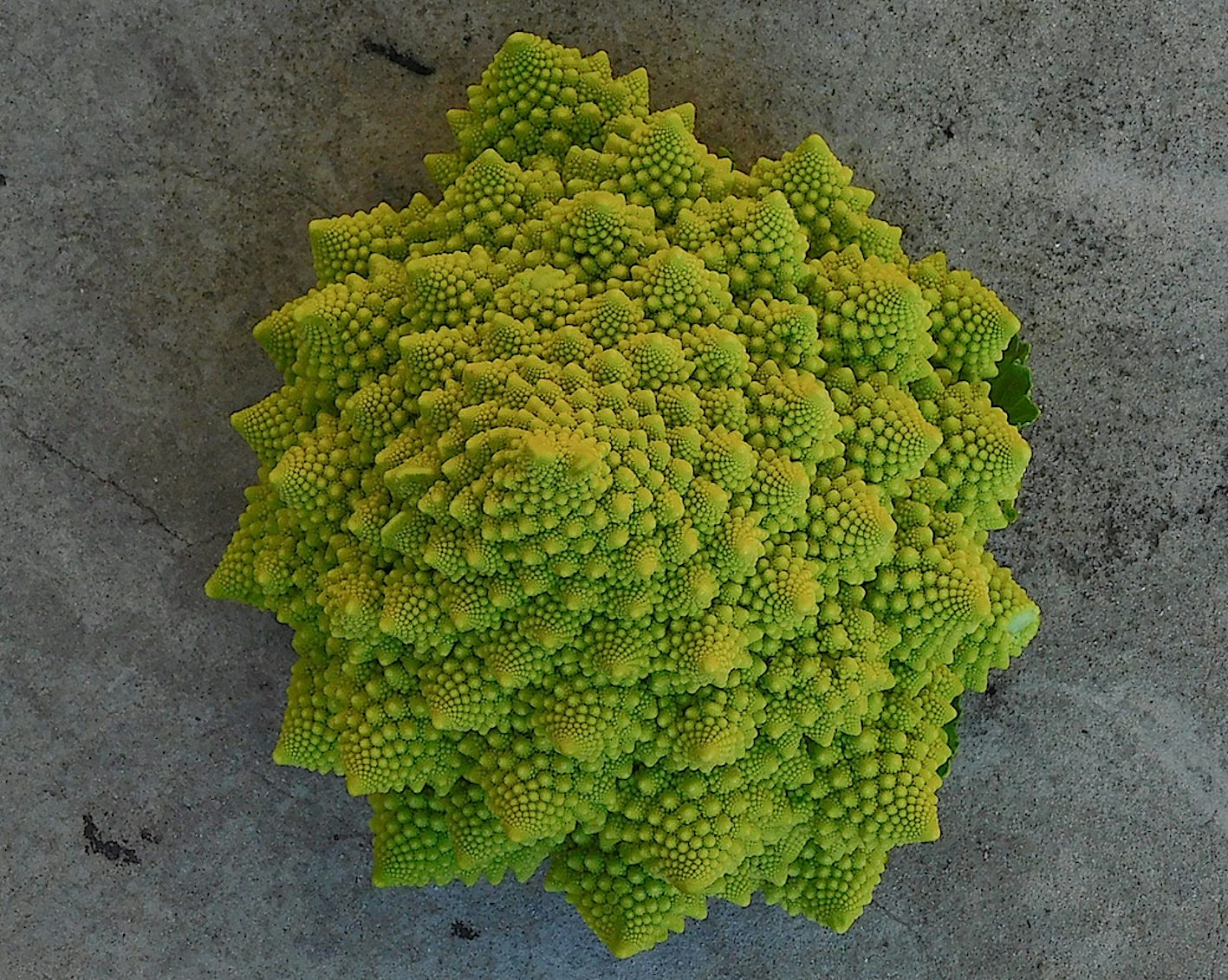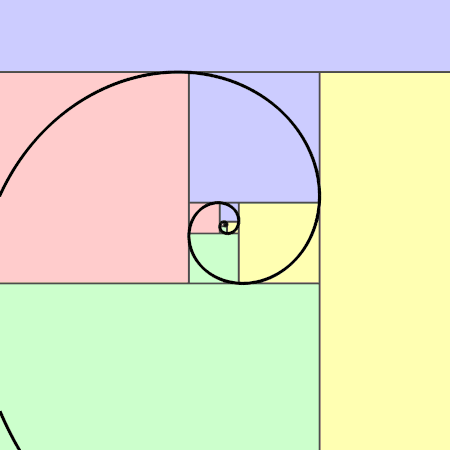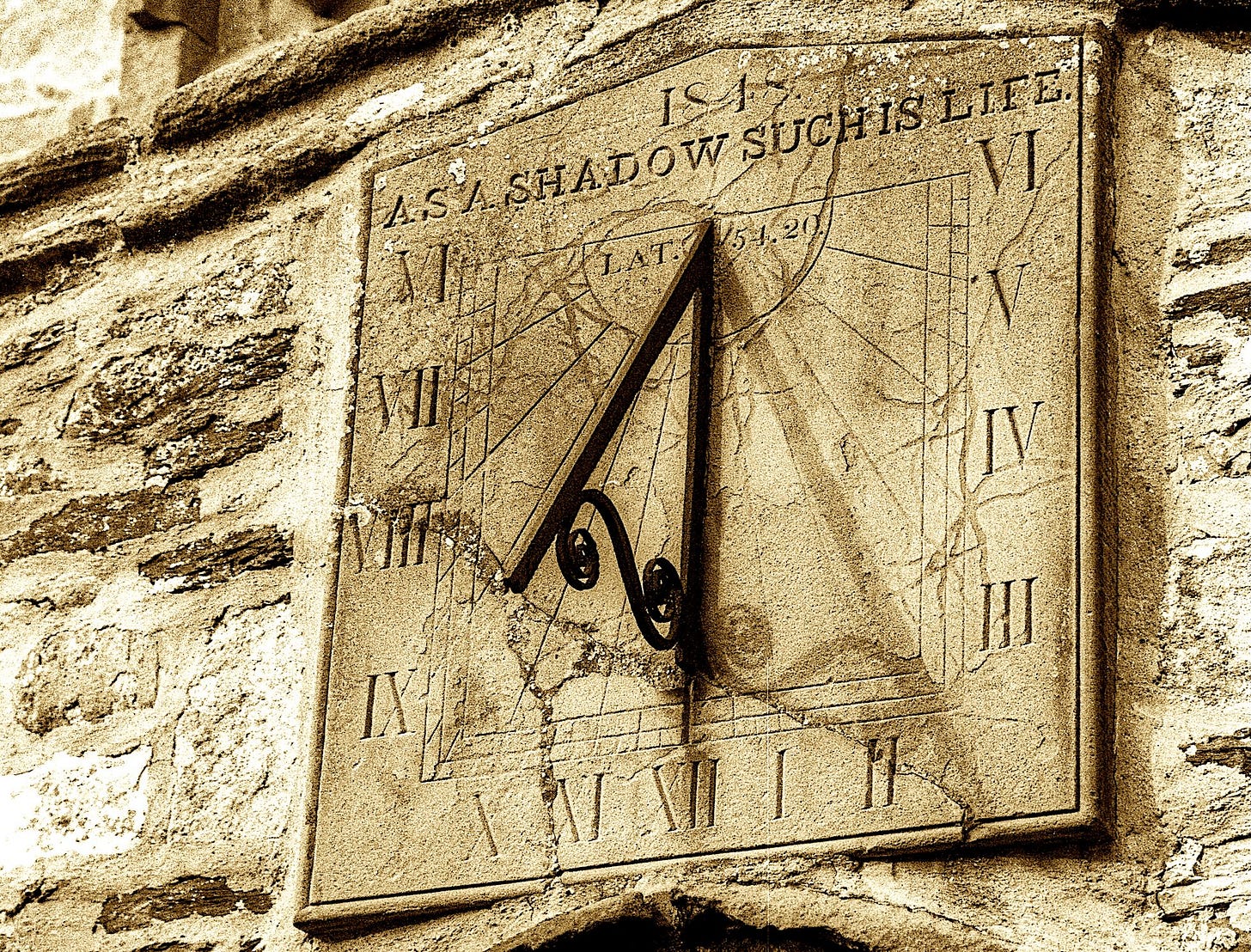Though analogy is often misleading, it is the least misleading thing we have.
〰 Samuel Butler 〰
The Golden Spiral and Proportional Analogy
Nature loves analogies, but not repetitions.
〰 Ralph Waldo Emerson 〰
The golden ratio ~ also known as the golden mean, golden section, or divine proportion ~ is not just a 4-digit number. It has inspired countless analogies, which in turn have inspired human exploration, civilisations, creations, and life.
The golden ratio is a so-called irrational number. It is approximately equal to 1.618 and depicted by the Greek letter phi ϕ. This number is considered irrational because it cannot be expressed as ‘a fraction of two integers’.
Integer and fraction are mathematical terms. An integer is any whole number (like 4 or 60) and a fraction is part of a whole number, e.g. 60 minutes ÷ 4 = 15 minutes, is a fraction of an hour. 15, therefore I guess, would be called a ‘rational number’.
So back to ϕ ≈ 1.618 which cannot be calculated by dividing any two whole numbers… The funny thing is that in nature, ϕhi is everywhere. You can see it in the arrangement of a sunflower seedhead, the unfurling of young fern leaves, a nautilus shell on the beach, snail shells in the garden, the petal arrangements and petal counts of many flowers, in a ram’s horn, pinecones, pineapples, a romanesco cauliflower.
In the early 13th century, the Italian mathematician Leonardo Pisano introduced a number sequence to Western mathematics, which is very close to the golden ratio. (The sequence itself was first described around 200 BC by Pingala, an ancient Indian mathematician, in his work on Sanskrit poetry).
In the Western world, the sequence has become known as the Fibonacci sequence, named after Pisano’s nickname. What’s so special about this sequence ~ 1, 1, 2, 3, 5, 8, 13, 21 etc. ~ is that every subsequent number is the sum of the two previous ones. And the spiral based on the Fibonacci sequence is very closely related to the so-called Golden Spiral.
The defining property of the Golden Spiral is continuous proportional growth, where each segment relates to the next one by ϕ. Therefore, the Golden Spiral itself is a prime example of proportional analogy: the ratio of A to B equals that of B to (A+B).
The Golden Rectangle ~ a rectangle where the ratio of its longer side to its shorter side is ≈ 1.618 ~ is the only rectangle with self-similarity. This means, adding a square to the long side or cutting a square from the short side produces another self-similar rectangle, which is one of the definitions of analogy.
The Golden Spiral itself, which effectively grows by analogy, is considered an analogy for balanced proportions in general. It has inspired works of architecture, art, geometry, ethics, understanding of evolution, metaphorical thinking, and computer science.
Thinking in Analogue Time
We thought of life by analogy with a journey, a pilgrimage, which had a serious purpose at the end, and the thing was to get to that end…
But we missed the point the whole way along. It was a musical thing and you were supposed to sing or dance while the music was being played.
〰 Alan Watts 〰
Thinking in Analogies ~ an inspiring piece published in February 2025 by fellow substacker Dr. Colin W.P. Lewis has sparked my recent thinking about analogies. In his post, Colin mentions what has gone into history as one of the earliest known analogies of human thinking in ancient literature and science:
In ancient Mesopotamia, the epic of Gilgamesh, written about 4,000 years ago, Gilgamesh's grief over the death of his friend Enkidu is described in analogies: “He hovered like an eagle over the body, or as a lioness does over her brood.”
Life and death figure as ‘timeless topics’ (in the metaphorical sense) throughout human epic, poetry, prose, and non-fiction literature, often represented in analogies ~ life as a journey, death as the journey’s end or final destination.
Time itself ~ the phenomenon we value as the stretch between birth and death ~ has inspired many analogies, here are some common ones:
time flies
time is a thief
time is money
time is a healer
time is precious,
a race against time
running out of time
time can be invested
time should be saved
time flows like a river
time must not be wasted
In addition to imaginative language, time has also inspired some inventions: the first known sundial was created about 3500 years ago in Ancient Egypt.
Did you know that our current daily 24 hour cycle of time ~ the exact same one we use today to schedule meetings, plan our meals, book a date, count down the hours and minutes when looking forward to an exciting event, arrange our lives around ~ was established by the Egyptians?
I had no idea! Our 2x12 hour cycle is based on the observations of the stars and knowledge of maths of Egyptian astronomers and mathematicians. The first sundials were effectively analogies to what they conceived as the earth’s movements in relation to other celestial bodies.
From the early sunclocks, we know that the shadow of the obelisk ~ or whatever the Egyptians used as their first sundial ~ moves clockwise, from East to South and so forth in the course of the day between sunrise and nightfall.
The term clockwise is commonly used as an analogy (or metaphor) for the progression of time. In many mechanisms and rotary controls the clockwise movement is used as the default direction for tightening a screw, on the assumption that the rotary motion in this particular direction is a universal reference point.
By the way, the same movement is reflected in Celtic cultures and practices and referred to as sunwise, while the counterclockwise movement is called moonwise.
However, it’s not universal after all! Had the sundial been invented in the Southern hemisphere, these movements ~ and their analogies ~ would have established themselves in the exact opposite direction. Because, in the Southern hemisphere, the sun appears in the northern half of the sky, and its motion around the earth is counterclockwise.
The Analogous Life of Analogy
Eventually, I believe, current attempts to understand the mind by analogy
with man-made computers that can perform superbly some of
the same external tasks as conscious beings will be
recognized as a gigantic waste of time.
〰 Thomas Nagel 〰
The word analogue has had quite a wild ride since it was born in Ancient Greece in analogue time.
Analogy [from Greek ana = upon, according to + logos = ratio; word, speech, reckoning] was adopted in English in early 15 c. either from French or Latin in the sense of correspondence, proportion.
Originally coined by Plato as a mathematical term in the sense of an equation between ratios, the meaning of partial agreement, likeness, proportion between things developed in the 1540s.
Analogy strictly refers to a partial resemblance between things which are essentially different from each other.
“Thus when we say that learning enlightens the mind we recognise an analogy between learning and light, the former being to the mind, what the latter is to the eye, enabling it to discover things before hidden.” (Century Dictionary)
In logic, analogy is defined as “a form of reasoning in which, from the similarity between two or more things in certain particulars, their similarity in other particulars is inferred.” (ibid.)
In biology, analogy means a resemblance in physiological appearance or function without morphological relationship, as in the analogy between wings of an insect and those of a bird, or the analogy between the gills of fish and the lungs of mammals.
Analogue has been used in English in the sense of a word corresponding with another since 1837.
In computing terminology analog(ue) has been adopted since 1946 to describe a mechanical device or system operating with numbers, or representing data using physical quantities, as opposed to digital data. E.g. analogue watches display time using rotating hands, analogue recordings capture and store sound waves as electrical signals etc.
In the food industry analog(ue) has been adopted since the 1960s with the introduction of ‘texturised vegetable protein’ (TVP aka plant based meat, meat analogs) to emulate meat products, catering for a growing vegetarian and vegan market.
Merriam Webster Dictionary states that “Analogue is a handy word for something that is similar to something else in design, origin, use, etc., as in ‘tofu is a meat analogue’.”
Analog(ue) has infiltrated the market with a wide range of consumer products, blurring the boundaries between manmade and natural materials. What is sold as ‘silk’, may be made from fibres ‘analogous to silk’, including soy, bamboo, orange fibre, lotus stems, or an array of synthetic fibres which have never come close to a single silk worm.
Meanwhile, doors, flooring, furniture made of composite boards containing cardboard, recycled plastics, and other materials are offered to look ‘analogous’ to wooden products, while ‘analog wood’ refers to products made of actual wood incorporating some ‘non-digital element’.
Moving on to creative pursuits, analog art refers to any form of art created, believe it or not, by using traditional materials manipulated by hand, including painting, sculpture, printmaking, pottery, textile work, analog photography, handling physical tools and working with actual physical materials… resulting in unique products with imperfections distinct from digital art.
Analogue Holidays
And now, while the analogy sinks in, I will be leaving you drips and going outside.
〰 Bill Watterson 〰
While digital life is promoted as the new norm of advanced humans, a technologically enhanced civilisation superior to all those who have gone before ~ drawing analogies from its ‘analog = outdated = old-fashioned’ ancestors, appropriating ecosystem, playground, garden, sandbox, highways, toolbox, creating, libraries, communication, languages, communities, tribes, interconnectedness, intelligence, nature, global village even lifeline ~ there is a reality it can neither undo nor cover up, neither replace nor improve on.
Algorithmic, artificial, augmented, automated, computerised, cybernated, digital, electronic, enhanced, online virtual operations driven by machine are a far cry ~ in essence, nature, potential, and vital energy ~ from the real authentic living human competence in algebra, arithmetics, arts, authenticity, autopoiesis, common sense, creativity, crafts, emotional depth, empathy, ethics, fine motor skills, imagination, independence, intuition, inspiration, inventiveness, neural networks, offline skills, responsibility, soul, spirit connections, understanding, virtuousity… not to mention music and dancing and enjoying real food.
In a recent post fellow substacker
wrote:“No one says on their death bed, ‘I wish I had spent more time online.’…
I’m going analogue.”
Pondering analogous thoughts of my own ~ because contrary to appearances of ease and swiftness › good online writing is a hell of a lot of analogue work by a real human › and I need a break ~ so here’s my analogical digital announcement:
We’re off to the Algarve next week to spend some fabulous analogue time with our grandchildren and their parents, enjoy veridical immersions in the cerulean alkaline waters of the thermal baths, read a few non-digital books, have a delicious brunch or two in our favourite Algarvian spots, and recharge our offline batteries in the breeze of the Atlantic Ocean.
The good, of course, is always beautiful, and the beautiful never lacks proportion.
〰 Plato 〰











Nature cares not a whit about the digital, the computer, the online, the faux world of human manufacturing. Nature cares about harmony and beauty. The golden ratio was created by Nature, and so we can learn about proportions, beauty and harmony.
Without the extremes we have created, putting us off balance. "Time to work our way back to balance." (Having some fun here.)
It looks like your time away will be full of harmony and discovery, with a slice of joy. In dedication to Phi. Enjoy your phi time, Veronika.
Veronika, as someone who has a huge resistance to numbers and mathematical ponderings, you challenged me here, but I read on and I love your ponderings! Wishing you a wonderful analogue time out! 💕 Enjoy to the fullest!